Mojave Road
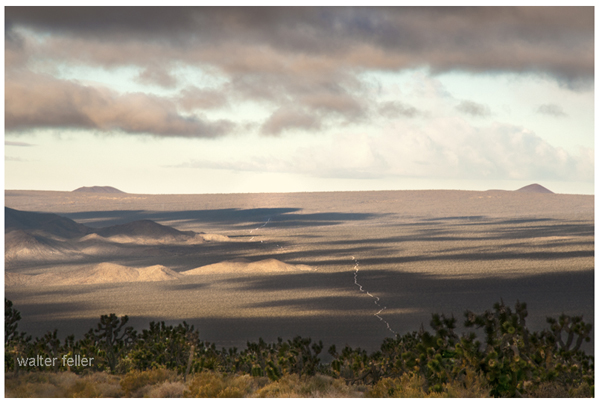
The Mojave Road is a historic 140-mile trail that spans the Mojave Desert, rich in historical significance. Many years prior to becoming a road, Native American groups such as the Mojave and Anasazi utilized it as a trading route for items like turquoise with neighboring tribes. Picture walking through a scorching desert on foot for trading purposes. That's pure resolve!
Afterwards, the trail was also utilized by Spanish explorers and American fur trappers. Jedediah Smith, a well-known trapper, also enlisted the assistance of Mojave guides to navigate the challenging desert terrain. Nevertheless, with the increasing number of individuals utilizing the path, tensions arose with the Mojave tribe, leading to a decline in the fur trade and a decrease in travelers along this route.
Following the Civil War, the Mojave Road gained significance in linking individuals to Arizona's capital, Prescott. Still, due to ongoing conflicts with Native American tribes, forts were constructed along the road by the military in order to safeguard travelers and mail carriers. These fortresses are currently included in what is known as the Mojave National Preserve.
However, with the progress of technology, the significance of the Mojave Road declined. Steamships were able to transport goods along the Colorado River, but with the completion of the railroad in 1883, the route was largely abandoned and became a dusty path in the desert.
Today, the Mojave Road resembles a history book that is alive. It brings to mind the individuals who journeyed along it, including Native Americans, explorers, and pioneers, demonstrating remarkable strength and perseverance. Currently, the road is well-liked by off-road enthusiasts and individuals interested in history, providing an opportunity to explore the harsh beauty of the desert and discover its vibrant history.
The Mojave Road is a historic 140-mile trail across the Mojave Desert, originating from Native American footpaths and later used by Spanish explorers, American settlers, and the military. It was vital for trade, exploration, and westward expansion in the 18th and 19th centuries. Key landmarks include Fort Mojave, Camp Cady, Marl Springs, Soda Lake, and Afton Canyon. Today, it is a popular route for off-road enthusiasts, hikers, and history buffs. The Mojave Road showcases the desert's rugged beauty and rich history.
The Mojave Road follows an ancient foot trail crossing the Mojave Desert, which has been used for centuries by various people and cultures to get from one place to another.
This route was used by the Anasazi, the prehistoric New Mexico and Arizona culture, in its trade of turquoise and other goods with coastal tribes.
The Mojave Indians, living along the Colorado River near present-day Needles, California, were among the earliest users of this route. They traded goods with coastal tribes like the Chumash, showcasing their endurance and adaptability in desert travel. As travelers moved west from the Colorado River, they entered Chemehuevi territory continuing along the same path.
The route later seen use by Spanish explorers, then American fur trappers. In the 1820s, fur trappers, like Jedediah Smith, hired Mojave guides to cross the desert. Soon enough, however, disputes between the Mojave Indians and, in general, the decline of fur trade activity lessened this traffic.
After the Civil War, the need for a protected route to the Arizona capital, Prescott, led to increased use of the Mojave Road. Native American resistance necessitated military intervention, resulting in the establishment of forts along the route within what is now the Mojave National Preserve. These forts provided crucial protection for travelers and mail.
However, the rise of steamship and railroad transportation soon overshadowed the Mojave Road. Steamships could carry cargo up the Colorado River, bypassing the desert route. The completion of the Atchison Topeka & Santa Fe railroad in 1883 dealt the final blow, transforming the once-essential Mojave Road into a forgotten dirt path.
The Mojave Road stands as a testament to the enduring spirit of the people who traversed it. From Native American traders to Spanish priests and American pioneers, this route encapsulates a rich history of resilience, trade, and exploration in the harsh yet beautiful Mojave Desert. Today, it serves as a historical landmark, reminding us of the transformative power of transportation in shaping regions and cultures.
History of Eastern Mojave & the Mojave Road
Historic Mojave Road - 1863
Across America - Prescott to Los Angeles
Indian Trail
Jedediah Smith
Fr. Garces
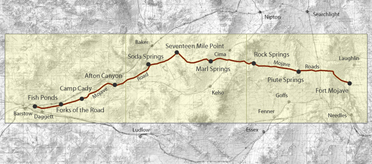
East
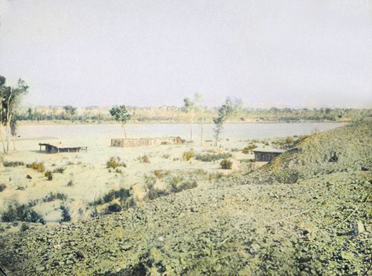
Central
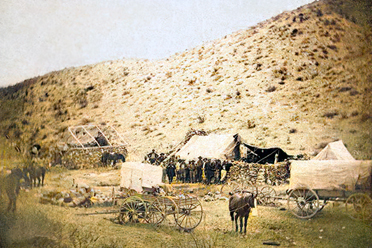
Marl Springs
On the Frontier
Seventeen Mile Point
Pinch of the Journey
Soda Springs -- Army Outpost Soda Springs
Soda Lake
West
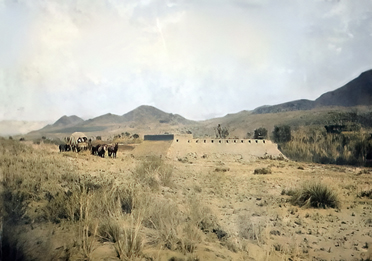 Afton Canyon
Afton CanyonCamp Cady
History of Camp Cady
Covert Operations
Fork in the Roads s
